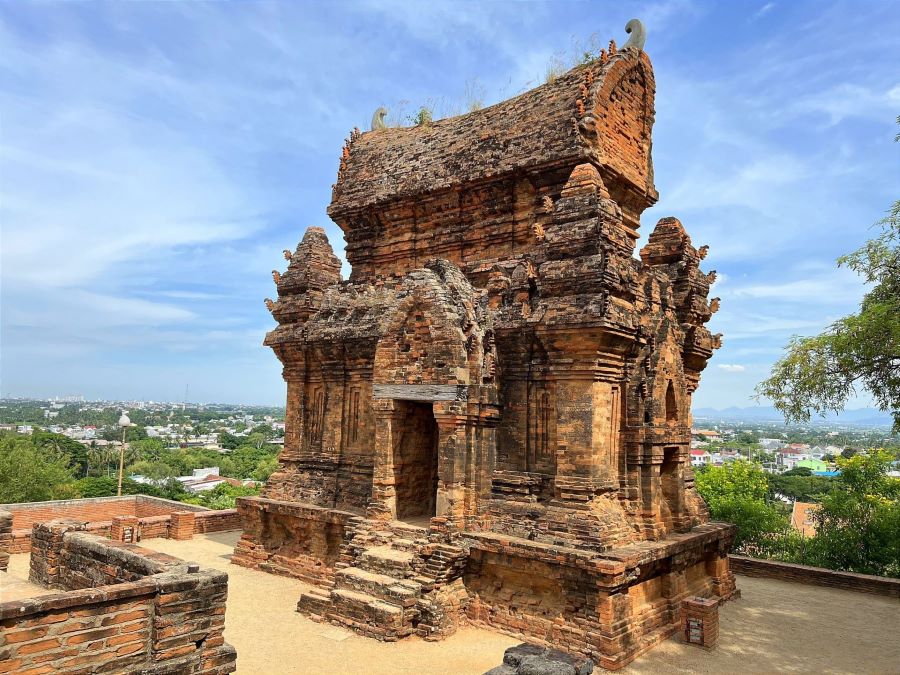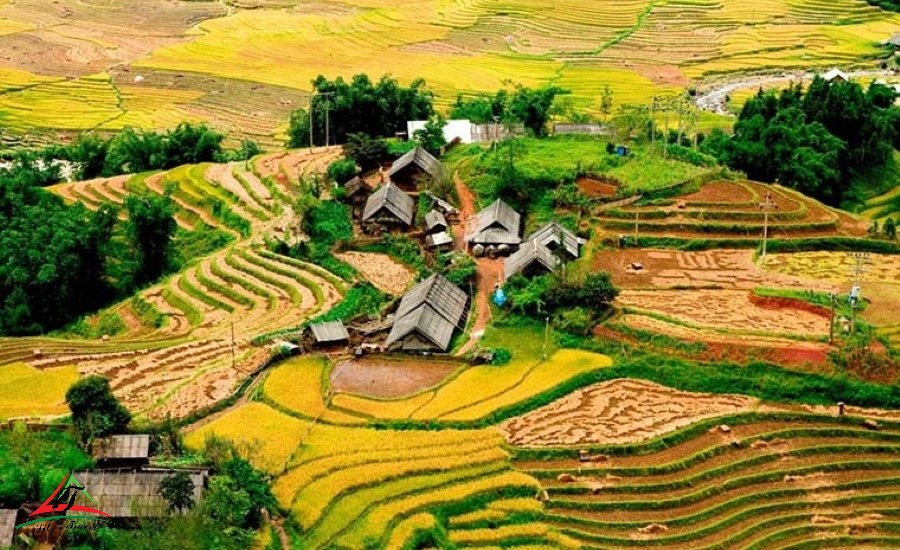Traveling to Vietnam: A guide to 20 cultural dos and don’ts
Travel to Vietnam, exploring the captivating beauty and rich cultural tapestry of this country, blessed by the warmth of its people. To enhance your travel experience and avoid cultural missteps, it is crucial to acquaint yourself with a few rules about dos and don’ts in Vietnam.
We share with you 20 valuable tips and recommendations on the dos and don’ts in Vietnam, ensuring you navigate with confidence and ease through Vietnam’s customs and etiquette.
10 Dos During Your Trip to Vietnam
1. Wear modest attire when visiting sacred places
Following local customs and dress codes – especially when visiting sacred places like temples, pagodas and other religious sites – demonstrates a deep respect for Vietnamese culture and traditions. This mindful practice not only helps avoid causing unintentional offense or discomfort to local communities and worshippers, but it also allows travelers to engage more meaningfully with the spiritual atmosphere of these places. By dressing modestly, removing shoes where required and behaving respectfully, visitors show appreciation for centuries-old beliefs and customs.
In doing so, you’re not just observing etiquette – you’re opening the door to a more authentic and enriching experience, one that fosters mutual respect and a deeper understanding of the cultural and spiritual significance of each site. Such gestures of cultural sensitivity often lead to warm interactions with locals and a stronger emotional connection to the places you visit.

Ngoc Son Temple – Hanoi, Vietnam
2. Remove your shoes when entering a house or a temple
This gesture not only symbolizes reverence but also helps maintain cleanliness, especially in households where people use the floor for sitting and sleeping. Following this tradition helps avoid cultural misunderstandings and demonstrates appreciation and compliance with local standards. Shoes should also be removed when entering the various areas of temples and pagodas.
3. Adopt a respectful attitude towards locals and their customs
During a tour in Vietnam, international visitors often discover the friendly and welcoming nature of the Vietnamese people. By reciprocating with respect for their culture and traditions, travelers can foster positive and pleasant interactions with the locals.
4. Use small denominations of Vietnamese dong for transactions
This practice proves beneficial when dealing with various vendors, stores, and small street stalls. Having smaller denomination bills ensures a smooth shopping experience during your exploration of Vietnam.
This culinary adventure is a must, offering a unique exploration of the local culture at an affordable price.

Money in Vietnam
5. Enjoy affordable street food in Vietnam
Enjoying affordable street food is one of the highlights of any Vietnam trip and it’s especially rewarding for those on Vietnam family tours. This culinary adventure offers much more than just delicious meals – it’s an immersive cultural experience that introduces your family to the heart of Vietnamese daily life. From savoring a warm bowl of pho on a busy Hanoi street to trying banh mi or freshly rolled spring rolls in Ho Chi Minh City, every dish reflects the bold flavors, fresh ingredients and regional diversity that make Vietnamese cuisine world-famous.
A Vietnam tour often includes guided food walks or visits to bustling local markets, where both kids and adults can sample authentic snacks, learn how dishes are prepared and interact with friendly local vendors. The affordability of street food also means families can try a wide variety of dishes without breaking the budget – turning each mealtime into a fun and memorable part of the journey. Whether in the north, central or southern regions, street food is an essential (and tasty) way to connect with Vietnamese culture as a family.
6. Visit local markets for an immersion into vibrant culture
Vietnam’s markets provide an opportunity to taste delicious street specialties, discover distinctive souvenirs, and interact with friendly locals in the lively market atmosphere.

Bac Ha – A typical traditional ethnic market
7. Bargain when shopping at Vietnam’s markets
Skillful negotiation is an integral part of the shopping experience in Vietnam, allowing visitors to interact with local sellers while bargaining for various goods. The key to successful bargaining lies in maintaining a friendly and respectful attitude to secure the best deal possible for souvenirs and other items.
8. Expect bustling traffic, especially in major cities
During your Vietnam tours, especially in bustling cities like Hanoi, Ho Chi Minh City and Da Nang, it’s important to stay alert and aware of your surroundings. Traffic in Vietnam can be overwhelming at first, with a constant flow of motorbikes, cars and pedestrians sharing the same space. Always follow traffic rules and use crosswalks carefully. If you’re exploring on foot, be extra cautious at busy intersections and try to avoid walking during peak traffic hours – typically early morning and late afternoon.
To navigate the cities more smoothly, consider using ride-sharing apps like Grab, which are widely available and offer a convenient, affordable way to get around. Many travelers on their trip to Vietnam find that using these services not only saves time but also provides a more relaxed experience, especially in unfamiliar areas. Whether you’re visiting local attractions or heading to your next destination, a little caution and smart planning go a long way toward making your Vietnam journey safe and enjoyable.
9. Protect yourself from tropical sun with sunscreen and a hat
These simple measures are essential to shield yourself from sunburns and heat-strokes, ensuring a comfortable exploration of Vietnam’s diverse landscapes.
10. Learn a few basic phrases in Vietnamese to show respect for local culture
Even a simple “xin chào” (hello) or “cảm ơn” (thank you) in Vietnamese can significantly enhance your communication and foster positive connections with the Vietnamese people you encounter during your journey.
10 Don’ts During Your Trip to Vietnam
1. Avoid revealing clothing and inappropriate behavior in temples
Modesty is crucial, especially when visiting religious sites. Dress appropriately by covering your shoulders and knees as a sign of respect for cultural norms. Do not touch offerings on altars in temples and houses, as they are meant for the deceased.
2. Don’t raise your voice in public
Expressing emotions, especially anger, openly is considered inappropriate. Resolving issues calmly and privately is seen as more respectful to prevent misunderstandings and conflicts.
3. Show restraint in public displays of affection
Intimate physical contact, such as kissing or hugging, should be avoided in public spaces, particularly in conservative areas. Holding hands is generally acceptable, but follow the locals’ example.
4. Don’t disrespect the national flag and leaders
When traveling in Vietnam, it’s important to show respect for national symbols, including the Vietnamese flag, national emblems and images or references to political leaders. Any form of disrespect – intentional or not – towards these symbols or figures is considered a serious offense and can lead to legal consequences. This includes actions such as defacing currency, making inappropriate comments about the government or mocking political leaders, whether in person or online.
Foreign visitors are encouraged to be mindful of local customs and laws and to avoid sensitive political discussions in public settings. Demonstrating cultural awareness and respect not only ensures a trouble-free trip but also reflects positively on you as a guest in the country.

Statue of President Ho Chi Minh – HCMC
5. Avoid touching the head without permission
The head is considered the most sacred part of the body in Vietnamese culture, and unauthorized contact is seen as disrespectful.
6. Do not use your feet to point
Gestures with the feet are offensive as they are considered the lowest part of the body. Use hand gestures to convey messages respectfully.
7. Don’t take someone’s photos before seeking permission
Asking for permission before taking photographs, especially in situations where a small fee may be requested, is a courteous gesture respecting privacy and cultural sensitivities.
8. Avoid tap water; opt for bottled water
To prevent potential health risks, especially in rural areas, choose bottled water from reputable brands like “La Vie” or “Aquafina.”
9. Do not litter
Proper waste disposal is essential to contribute to environmental preservation, as Vietnam faces waste management challenges.
10. Avoid sensitive topics like war or politics
To prevent awkward situations, refrain from discussing emotionally charged topics such as war or politics during conversations with locals. Instead, focus on exploring Vietnam’s rich cultural heritage, natural beauty, and culinary delights.
By adhering to these guidelines on the dos and don’ts of Vietnam, travelers can foster positive and meaningful connections with the local community, ensuring a pleasant journey in Vietnam.
Have a nice trip!
Start planning your tailor-made Vietnam tour by contacting one of our specialists…







